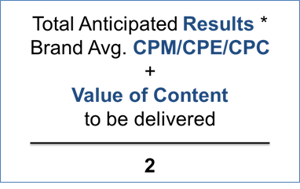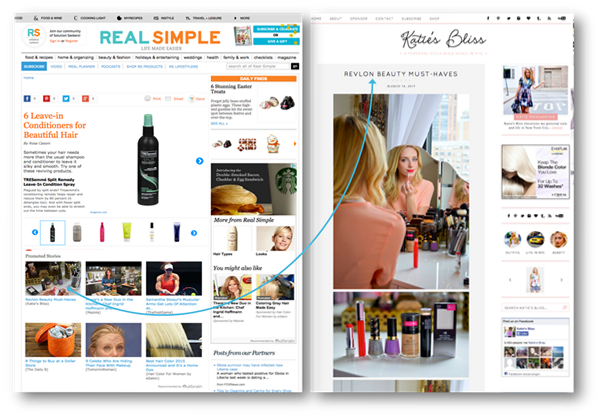Traditionally, most brands develop an influencer marketing strategy geared towards generating brand awareness. Unlike many other, more advanced forms of digital marketing, influencer has solely relied on a reach-based model where marketers look to get individuals with large online audiences to talk about them in hopes their content will influence the people who follow them.
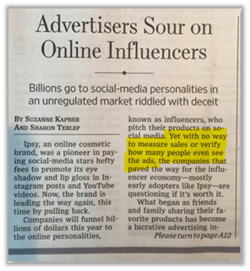 While still widely used, this approach to influencer marketing hasn’t changed in more than 10 years.
While still widely used, this approach to influencer marketing hasn’t changed in more than 10 years.
Proof of this exists in this Wall Street Journal article that was published in the midst of developing this guide. The article goes to show that many marketers are still investing in influencer marketing tactics that they can’t tie back to sales because of the way they are choosing to execute those programs.
However, with the power of digital technologies we’re now able to design influencer programs that reach audiences at different stages of the marketing funnel and ensure you’re able to not just measure but actually drive attributable sales (both direct and indirect; online and off). In fact, when the right approach is leveraged, flights can build on each other, moving consumers all the way from brand introduction to purchase over the course of days, weeks, or months.
Throughout the following post we're going to identify and define different performance metrics, value indicators, optimization metrics and more, accompanied by our professional recommendation as to which metrics you should use depending on your primary objective. Lastly, we'll dive into the different stages of a campaign and how you should customize each piece to align with where your influencer objective falls in the marketing funnel.
Carusele's Guide to DEVELOPING Your Influencer Marketing STRATEGY
Key Performance Indicators
We find most marketing plans list the KPIs and measurement plan at the end. Why aren’t we starting with it first?
By nature, influencer marketing campaigns operate on a series of digital channels with technology and data we don’t own and can’t always access. As such, if you want to truly understand whether your campaign had the impact you hoped it would, you must structure your campaign from the ground up to ensure you’re both driving and measuring your success metrics.
When it comes to your influencer marketing strategy, we recommend you follow Forrester’s POST methodology to start your plan. Design your strategy around the people you want to reach and the objectives you want to accomplish before moving on to setting your strategy and tactics.
Once in place, part of the strategy phase is choosing which metrics you’ll use to measure success and which you’ll use to inform campaign optimizations. The two are very different, and depending on if you’re optimizing for upper, middle, or lower funnel objectives, you’ll want to choose different metrics for your campaign.
The following covers 20 different metrics you can leverage and where they fit within the marketing funnel. You read that right… 20 metrics. So say goodbye to feeling stuck with impressions and engagements and welcome the next level of influencer marketing success.
Impressions and Engagements ≠ Success
Before we dive too deep, let’s clear the air about impressions and engagements and why neither should be used as a primary metric of success for your influencer marketing campaign.
IMPRESSIONS: Currently, there are three different ways that impressions are calculated across the industry, making it difficult to compare campaign performances apples-to-apples.
- Max Potential = Super Fake
I have 10,000 Instagram followers, 20,000 Twitter followers, therefore I have 30,000 total followers. If I share something on those two channels, 30,000 people are going to see it. This is clearly not true. - Max Potential + Viral = Super Duper Fake
I have a magazine with one million subscribers and we have research that says the average subscriber gives this magazine to two other people, therefore, your ad will be seen by three million people. Again, not true. - True Views Only = Accurate Measure of Scale
ENGAGEMENTS: Facebook sales sheets currently state, “Industry research has repeatedly shown that engagement rates do not correlate with the outcomes ultimately used to judge the success of marketing efforts.” This goes further, as Facebook’s head of marketing also calls engagement data “irrelevant.”
Performance Metrics
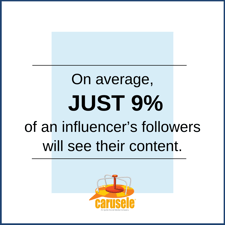 TRUE VIEWS
TRUE VIEWS
- Best For: Upper Funnel, Awareness Programs
- What It Is: A combination of paid (viewable) media impressions, organic reach impressions as reported by social networks, and, where organic reach isn’t available, an educated guess at the organic reach impressions based on network-specific benchmarks.
- Why It Matters: Unlike the historical industry standard of reporting max potential impressions (calculated with number of posts times number of followers at the time of the posting), a.k.a. “earned media impressions”, “viral impressions”, or, “fiction”, True Views offer a number that aligns with I.A.B. viewable digital impression standards.
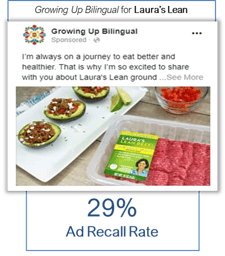 AD RECALL RATE
AD RECALL RATE
- Best For: Upper Funnel, Awareness Programs
- What It Is: A metric reported by Facebook on certain types of ads run via Business Manager. Ad Recall Rate is the estimated percent of your exposed audience who would answer “Yes” to “Do you recall seeing an ad from [brand] in the last two days?”.
- Why It Matters: According to Nielsen, Ad Recall is the metric that best correlates with ad effectiveness in terms of brand awareness and consideration. As we mentioned on the previous page, impressions and engagement do not.
- Strategy Impact: You must be running ads directly from the influencers’ business accounts and choose the ad recall optimization to get this metric. We advise you use a 6% Ad Recall Benchmark when measuring success.
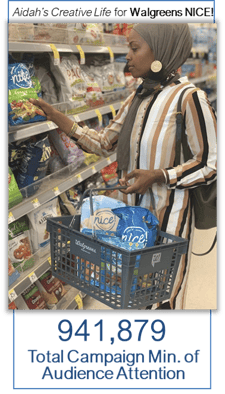 ATTENTION
ATTENTION
- Best For: Upper Funnel, Awareness Programs
- What It Is: An estimate of the amount of time spent with content as calculated by the types of actions users have taken with that content.
- Why It Matters: Since Ad Recall can only measure the impact the paid content is having on users, Attention offers a look at the impact of the broader campaign. By calculating minutes of attention per dollar spent, we can assess budget impact by comparing to the cost-per-minute of attention in other marketing channels.
- Strategy Impact: Campaign must be run through a system that allows you to capture actual views of content (not max potential impressions) and all engagement types (likes, comments, shares, link clicks, video views, etc.). Ideally, video and blog heavy campaigns should also capture average watch time and average time on page respectively.
BRAND LIFT
- Best For: Upper Funnel Awareness AND Middle Funnel Consideration Programs
- What It Is: A survey-based study designed to determine the impact influencer content had on consumer awareness and attitude toward the brand by comparing results of an exposed audience to a control (unexposed) audience.
- Why It Matters: The whole point of influencer marketing is to influence people, right? This method tells us whether the content published by influencers did just that by asking a series of questions designed to determine incremental levels of brand awareness, sentiment, and perception.
- Strategy Impact: We recommend at least 90% of your campaign impressions come from an audience you have targeted via paid media to ensure the exposed and control groups created accurately represent the people reached by your campaign.
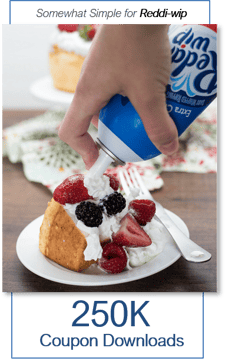 LOWER FUNNEL ACTIVITY
LOWER FUNNEL ACTIVITY
- Best For: Middle Funnel, Consideration & Perception Programs
- What It Is: A set of actions (usually only) that suggest a user is seriously considering buying your product. Common examples include visiting key buying pages on your website (e.g., how it works, coupon downloads, find a store, add to cart, etc.).
- Why It Matters: 81% of retail shoppers conduct research online before ultimately buying a product in store. What’s more, sales in certain industries with long sales cycles (e.g., auto) can be nearly impossible to evaluate with sales lift measures. Putting a value on lower-funnel activity driven by a campaign can help with more immediate evaluation and optimization.
- Strategy Impact: Top influencer marketing channels like Instagram do not lend themselves to driving site traffic. As a result, common lower-funnel activity measures may be missed unless a campaign is designed to overcome such barriers.
SEARCH & DIRECT TRAFFIC
- Best For: Middle Funnel, Consideration & Perception Programs
- What It Is: The amount of web traffic that came through direct or search channels during your campaign that exceeds the typical amount of traffic you get from these channels.
- Why It Matters: Historically for Carusele programs, 70-95% of all purchases made by people exposed to influencer content within 24-hours of that exposure did not click through and purchase immediately. Instead, we’ve seen it to be common user behavior that an exposed audience will see a product in their feed, keep scrolling, and later open up a browser with intent to do more research and eventually purchase.
- Strategy Impact: A clean benchmark must be established.
SEARCH VOLUME LIFT
- Best For: Middle Funnel, Consideration & Perception Programs
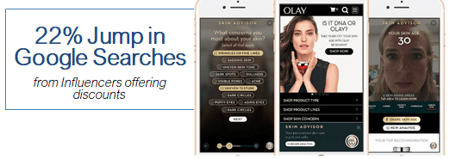
- What It Is: A measure of the volume of branded searches during and immediately after the campaign period as compared to a previous benchmark period.
- Why It Matters: 74% of consumers use search during the consideration and purchase phases of their journey. A lift in overall search volume is an indicator that more people are including the brand in their consideration set.
- Strategy Impact: A clean benchmark period must be established and the influencer program should be run during a time period where other variables (seasonality, market shifts, other marketing campaigns, etc.) are eliminated to the extent possible.
DIRECT WEB CONVERSIONS
- Best For: Lower Funnel, eCommerce Programs
- What It Is: A purchase or other action users take online after clicking on a tracked link or a referral link. This metric is commonly measured using coded referral links and setting a confirmation page as the “goal” page.
- Why It Matters: Every marketers hope is that a user sees an influencer’s content and clicks through to purchase. While some users do, not everyone does. This approach only takes into consideration last-touch attribution, and doesn’t give the influencer content any credit for being a component of a sale if the user ultimately purchased through a different method.
- Strategy Impact: If your tool is able, you’ll want to set-up an attribution window to ensure influencers get credit for purchases made by people they referred who may not have completed a purchase on their first, UTM tracked visit.
.png?width=225&name=Objectives%20Blog%201%20(1).png) WATCHOUT: The Problem With Last Touch Attribution
WATCHOUT: The Problem With Last Touch Attribution
Almost all direct attribution models focus on last touch, which as we said can be an issue in this industry (especially considering the buyer’s journey is rarely a straight line these days). Even more, we’ve consistently seen in our campaigns about 70% of attributable online conversions come from users exposed to content who purchased within 24-hours but never clicked on the influencers content. Google backs these findings up with recent research that shows 80% of exposed users who download an app did so directly instead of clicking on an ad.
ATTRIBUTABLE WEB CONVERSIONS
- Best For: Lower Funnel, eCommerce Programs
- What It Is: Total online conversions according to a pre-determined attribution model. This model can be developed for both brand-owned eCommerce websites or third-party websites using trackable UTM codes (or similar) and the Facebook Pixel to capture conversions of those exposed who may not have clicked.
- Why It Matters: Developing a custom attribution model for web conversions will allow you to better measure the true impact your influencer efforts generated.
- Strategy Impact: Using the outline below, you can customize a model that makes the most sense for your brand.
SALES LIFT AT SPECIFIC RETAILERS
- Best For: Lower Funnel, Retailer Programs
- What It Is: Leveraging influencers to drive audiences in-store to a specific retailer, then analyzing the sales lift one of three ways:
- Correlation Analysis: Daily sales compared to impression delivery; Correlations typically need to be run on a delay (Day 1 of impression delivery correlated to Day 7 sales, for example). The delay should be in line with a typical sales cycle for your product.
- Benchmark Comparison: Sales in the campaign period compared to a period where as many other variables as possible are eliminated
- Coupon Redemptions: Exclusive offer promoted only via influencers; Keep in mind not all shoppers use coupons. An attribution calculation may want to take into account what percent of your buyers typically use a coupon and scale up results to reflect people who simply aren’t coupon users.
- Strategy Impact: A clean benchmark can be difficult to find. Ensure your campaign is running during a period that is both best for your goals and measurable in terms of allowing for a clean benchmark. Additionally, if your intent is to drive sales at a specific retailer, content should both feature the retailer and target likely shoppers.
Finally, to see a lift requires scale. Nationally target campaigns will require significant investment to reach a measurable scale.
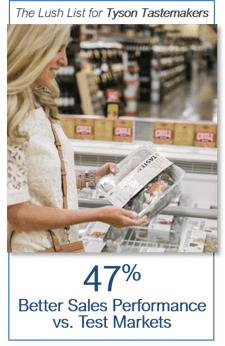 REGIONAL SALES TEST
REGIONAL SALES TEST
- Best For: Lower Funnel, Retailer Programs
- What It Is: Implementing influencer marketing in specific markets to help campaigns reach measurable scale with better controlled benchmarks.
- Why It Matters: Prove the model in a way that allows for impact measurement on a smaller budget than nationally targeted campaigns.
- Strategy Impact: Selected influencers and subsequent media should have significant reach in the targeted region to ensure sales aren’t being impacted elsewhere and diluting results.
FOOT TRAFFIC LIFT STUDY
- Best For: Lower Funnel, Retailer Programs
- What It Is: Monitoring the mobile devices of exposed vs unexposed audiences and using this data to determine lift in retail foot traffic by owners of exposed devices.
- Why It Matters: Perfect for retailers looking to understand the impact a campaign had on driving audiences in store.
- Strategy Impact: The length of your campaign is important as lift can be washed out if your campaign extends past a typical visit cycle. For high frequency retailers with broad reach, these studies might sound appealing but they are more likely to show little to no lift as a result of the scale and time limit requirements.
NIELSEN CATALINA SALES LIFT STUDY
- Best For: Lower Funnel, Retailer Programs
- What It Is: Leverages Nielsen’s internet panel to compare purchase behavior of people exposed to influencer content vs those who are not exposed.
- Why It Matters: By leveraging their panel, Nielsen can see the exact products purchased across a variety of retailers nationwide, offering the most statistically valid lift analysis of the one’s listed here. Keep in mind though, you’re still only seeing what the panel purchased and assuming the rest of the audience followed the same path.
- Strategy Impact: This study requires content to be pixeled, which means it’s pretty much limited to exposure on blog posts. Additionally, that exposure has to reach a scale to ensure a statistically valid sample from Nielsen’s internet panel. As a result, campaign costs to run a valid study can exceed $400K.
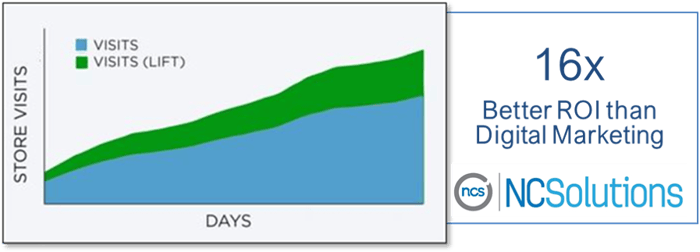
Value Indicators
While the previously discussed metrics are valuable for measuring the success of influencer marketing programs, the following can act as value indicators, provide meaningful insights for campaign optimizations, or be applied to other marketing efforts. Either way, the key is that there is some value is any metrics you can gather.
 CONTENT VALUE
CONTENT VALUE
- Best For: Upper Funnel, Awareness Programs
- What It Is: An estimate of what it would have cost the brand to procure the same assets (photos, videos, etc.) created by influencers and provided to the brand with a license to re-use and repurpose.
- Why It Matters: Content value is a cost savings metric which estimates the amount of money the brand will save by re-using the content produced during the campaign rather than procuring new assets from an agency or freelance creative network.
- Strategy Impact: Most importantly, each influencer contract must include a license (ideally perpetual) for the brand to re-use and repurpose the assets they create for the campaign (blogs, images, videos, etc.) Then, the campaign must be run through a system that allows you to identify (count) and apply a value to each type of asset.
WEB TRAFFIC LIFT
- Best For: Upper Funnel, Awareness Programs
- What It Is: The amount of web traffic that came through direct or search channels during your campaign that exceeds the typical amount of traffic you get.
- Why It Matters: As previously mentioned, 70-95% of all purchases made by people exposed to influencer content within 24-hours of that exposure did not click through and purchase immediately (and therefore would not be captured via a last touch attribution model). Instead, these exposed audiences will see a product they want in their feed, keep scrolling, and later open up a browser with intent to the purchase.
- Strategy Impact: Try to keep a clean benchmark for direct and/or search traffic.
Optimization & Insights Metrics
The following metrics are also valuable, as they can be leveraged to provide meaningful insights that can help you optimize both your influencer marketing strategy and your overarching marketing strategy.
ENGAGEMENT RATE
- Best For: Upper Funnel, Awareness Programs
- What It Is: The number of likes, comments, shares, link clicks or other actions a user could take on a piece of content, divided by the total number of True Views on the content.
- Why It Matters: While data clearly shows there is no correlation between social engagements and sales lift, engagements are an indicator of whether a piece of content is capable of capturing a user’s attention – a metric that has been shown to correlate with increased brand awareness and consideration.
INFLUENCER PERFORMANCE
- Best For: Upper Funnel, Awareness AND Middle Funnel, Consideration Programs
- What It Is: We use an algorithm called iStack® to give each influencer in our programs a score. It takes into account their performance against campaign objectives and the efficiency in which they were able to deliver on those objectives.
- Why It Matters: These scores allow us to compare influencer performance relative to others in the campaign. Top scoring influencers should be reactivated while lower scoring influencers should be moved out of the program. Over time, this approach leads to more efficient delivery on campaign objectives.
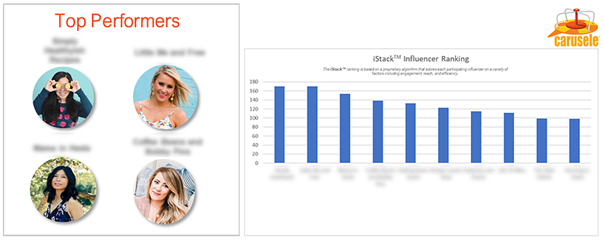
CONTENT PERFORMANCE
- Best For: Upper Funnel, Awareness AND Middle Funnel, Consideration Programs
- What It Is: We use an algorithm for this one, too. Carusele’s Content Performance Index® (also known as cStack) scores each piece of content published in a campaign according to engagement rate, virality, predicated influence, and quality.
- Why It Matters: We use this data in real time to optimize the campaign, but it can also be valuable for discovering thematic insights or predicting which content, if re-purposed by the brand, will perform well, saving brands valuable media and production dollars.
AUDIENCE INSIGHTS
- Best For: Upper Funnel, Awareness AND Middle Funnel, Consideration Programs
- What It Is: A profile of the shared characteristics of the people your campaign engaged.
- Why It Matters: In the age of the very real fear that your influencers may have purchased fake followers, these insights help confirm you actually reached who you intended to reach. What’s more, by focusing your profile on people who were not simply exposed but actually engaged with the content, you can glean insights about the type of people who your strategy had the most impact on.
INFLUENCER COUNTS
- Best For: Upper Funnel, Awareness AND Middle Funnel, Consideration Programs
- What It Is: Very simply, the number of influencers you activate in a given campaign.
- Why It Matters: Let us start off by saying that you don’t need as many influencers as you might think. That said, it’s important to have a diverse base of influencers participating. Diverse in terms of not only race but also the backgrounds, storylines, and personalities your influencers bring to a program. Why? Because a diverse campaign gives you a greater chance that people in your target audience will discover a piece of influencer content they can relate to. It also ensures you have the widest array of content to glean insights from as you make decisions about what to elevate through paid media.
TOTAL PIECES OF CONTENT
- Best For: Upper Funnel, Awareness AND Middle Funnel, Consideration Programs
- What It Is: A simple count of the number of assets published on the web by influencers. That might be a social post, a video, a blog, or even a photo in a blog since search engines will index those separately.
- Why It Matters: Content counts offer a glimpse into campaign scale but more importantly, into the potential longer-term benefits of discoverable content now on the web featuring your brand or product.
COMMENTS / AUDIENCE VERBATIMS
- Best For: Middle Funnel, Consideration & Perception Programs
- What It Is: A qualitative review of the actual comments left on influencer content.
- Why It Matters: Traditional engagement measures such as likes and clicks don’t tell us whether the audience received the message the way we intended. While comments only represent a sampling of the audience members who saw and were influenced by a piece of content, their comments can be an indicator of whether the audience was responding positively because they liked the influencer’s outfit or whether they actually heard the campaign message and have added the product to their consideration set.
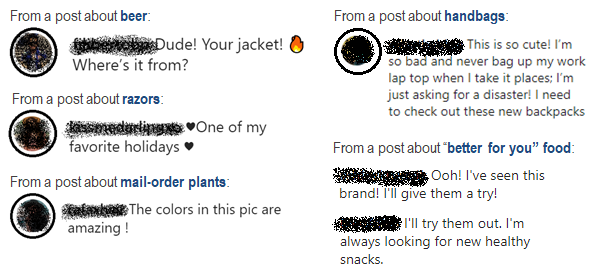
Designing Your Influencer Campaign to Match Your Objective
In addition to ensuring your campaign is set up to capture upper, middle, or lower-funnel metrics, decisions about the type of content influencer’s create, what channels the campaign operates on, and what type of targeting you leverage with paid media will all be impacted. The following will outline tactical optimizations you should make depending on your objective, but we also wanted to outline how your overall approach needs to change.
Here’s how we changed the typical influencer marketing process into a hands-on approach that allows us to optimize programs in real time to meet the different objectives our clients want.
Selecting Influencers
Most influencers will set their rates according to the combination of their total reach and the amount of work you’re asking them to do. You might find some are more expensive than you expected, others far cheaper. But you should never take an influencer provided rate without doing a little math to ensure that rate will help contribute to a positive ROI by delivering on your campaign objectives efficiently.
CONSIDER THE FOLLOWING TO CALCULATE RATES:
Cost Per Anticipated Result: More niche campaigns will cost you more but on average, you can expect to pay 10-20x what you’d pay to buy those same results via social media ads. Yes, you read that right, 10-20x!- For Awareness Campaigns: Calculate rates using a Cost Per Anticipated True Views
- For Consideration or Conversion Campaigns: Calculate rates using a CPE or CPC
Content Assignment Considerations
NOT ALL CONTENT IS CREATED EQUALLY
Some forms of content take much longer to produce (time is money) and then some forms of content are more optimal to use depending on your campaigns objectives. Below is a short list of content types that are going to require you to pay your influencers more regardless of the objective of your campaign.

LEVERAGING THE RIGHT CONTENT TYPES
Different types of content elicit different reactions from people, so it’s important that you task influencers to create content that drives audiences to take an action that aligns with your objective (and that it’s on the right channel!). If you’re focused on awareness, you’re likely golden on running a program on any network and platform, but here are some times for those middle and lower funnel influencer programs.
- Middle Funnel Programs: Blogs are a great SEO driver, and provide lots of information and detail to help your audience understand why your product/service is right for them. Video Content is also SEO friendly (like YouTube) and also allows the influencer to elaborate on the perks of your product.
- Lower Funnel Programs: Unlike mid-funnel, avoid long-tail content, or at least be prepared to see a slow drip from those assets. Instead, focus on assets that allow you to include direct links.
LEVERAGING CHANNELS THAT ENABLE TRACKING
Another note for all lower funnel programs, not all channels are built to allow all types of tracking. For example, Instagram and Pinterest are the most difficult, especially when it comes to organic, to measure clicks.
Instagram content can test out the “link in bio” and “swipe up” stories, but otherwise isn’t built to drive traffic directly to your site via a link click and user behavior on the platform confirms this. Similarly with Pinterest, the network now kicks back tracked links, or will mark your content as spam and push it down in the algorithm if you attempt to publish pins with link tracking appended.
STRATEGIC MESSAGING THAT INCENTIVEZES CONVERSIONS
In the conversion phase of the funnel, you need to give people a reason to purchase right then and there.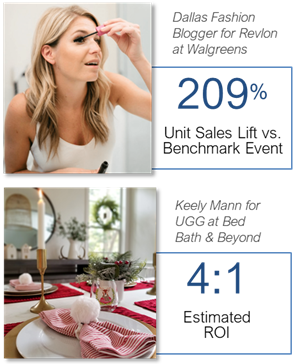
- Limited-Time Offers: Discounts and offers help incentivize users to take action quickly, and in a way that correlates with your campaign.
- Seasonal Content: Drives a similar user behavior without having to include a discount or offer, that still pushes a quick purchase.
Implementing a Custom Amplification Plan
Let’s not make the mistake of wasting precious (and highly efficient) media dollars on content that doesn’t perform.
Media plans should be designed to only amplify content that has already proven itself in the wild. Not only do you know the effectiveness of this content but positive signals from the audience can result in your cost per impression coming in 20%+ lower than if you started running media on all content and let the media platforms optimize everything for you.
BE CAREFUL HOW YOU BOOST
While media amplification is a necessary tactic in any consideration campaign, the simplest ways to leverage media on influencer content will not serve you well here. We recommend you avoid the boost button for these reasons: 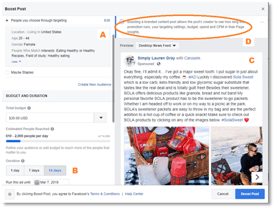
- Limited targeting with no optimization
- Limited timing control (ex. no dayparting)
- No creative optimization
- No confidentially
POWER IN THE PIXEL
Say what you will about the controversial Facebook pixel, associated data, and Facebook’s default attribution windows but know this is an incredibly powerful tool that can help you move audiences towards conversions. Not only can you do simple retargeting, which you can certainly do other ways, but the pixel allows you to optimize ads based on whether both clicker AND VIEWERS who didn’t click ultimately converted. Something you cannot do if you’re simply retargeting people who have landed on your site via tracked links.
LOOKALIKE AUDIENCES
In a world where consumers have a plethora of data at their fingertips and do more product research before buying than ever before, we caution brands expecting to move people down the funnel too quickly.
However, waiting months to move an audience through the buying process just so you have a large enough “primed” audience to target with a conversion campaign isn’t realistic either.
At Carusele, we’ve found by leveraging our Engaged Audience Profiles™ to create Lookalike audiences, we’re able to reach people who are more likely ready to buy. In fact, these lookalike audiences tend to convert about 2x better than traditional audience sets built using available platform targeting.
MOVING BEYOND SOCIAL
The power of influencer content comes in the stories and voices from credible third-party speakers. While social media platforms are a natural place for these stories to be shared, consumers in the consideration phase are often doing research via search and spending time on media sites relevant to the category.
By limiting your amplification plan to social only, you’re unlikely to reach potential consumers where they are in the mindset the right mindset.
Consideration campaigns that layer in Search Ads and Native Ads ensure we’re taking into account the Mindset in the Moment™ methodology, reaching audiences at the right time and place with the right content.
While this blog post is a great guide for aligning your influencer marketing strategy with your objectives, having an expert, or team of experts, on hand never hurts. Feel free to learn more about our unique influencer marketing process by contacting us today, or using the form below to download our capabilities deck.
-1.png?width=504&height=360&name=Carusele%20logo%20%C2%AE%20logo%20Color%20(2)-1.png)

.png?width=728&name=Blog%20Ads%20(3).png)
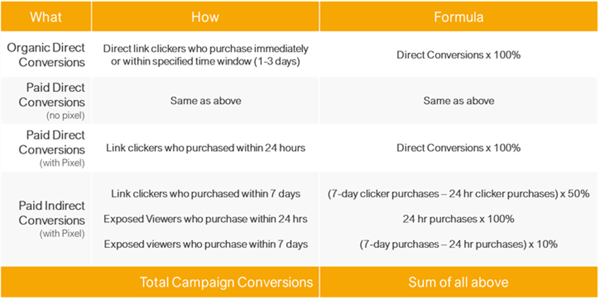
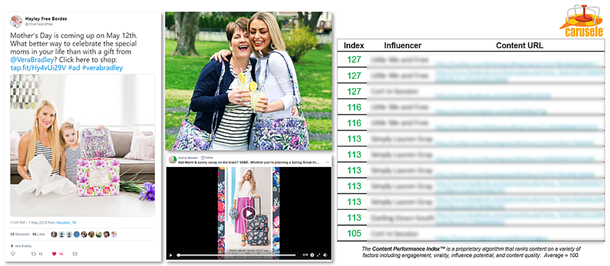

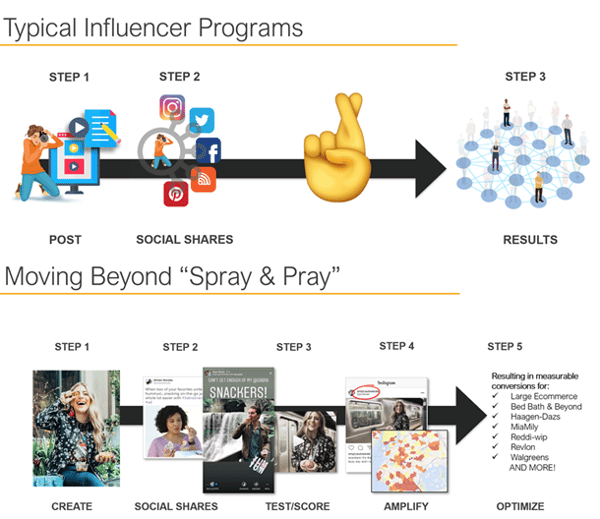
.png?width=728&name=Blog%20Ads%20(4).png)
